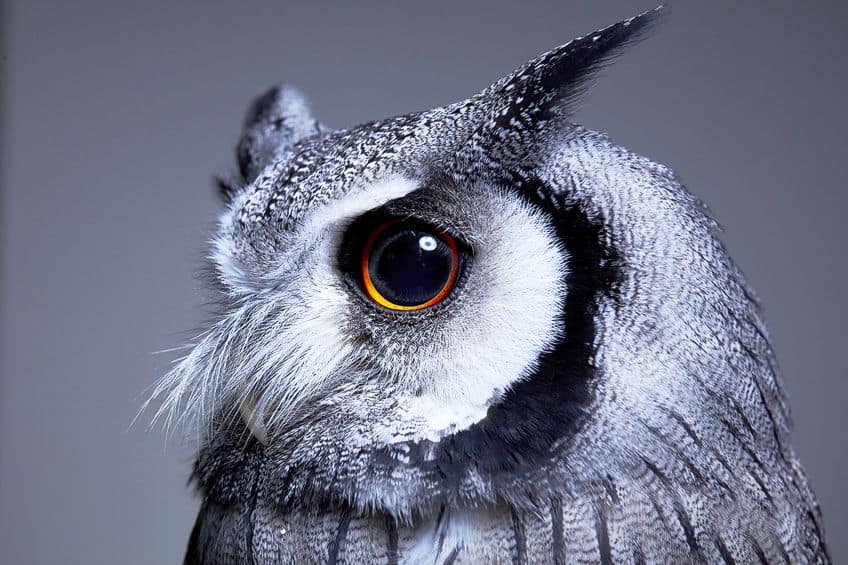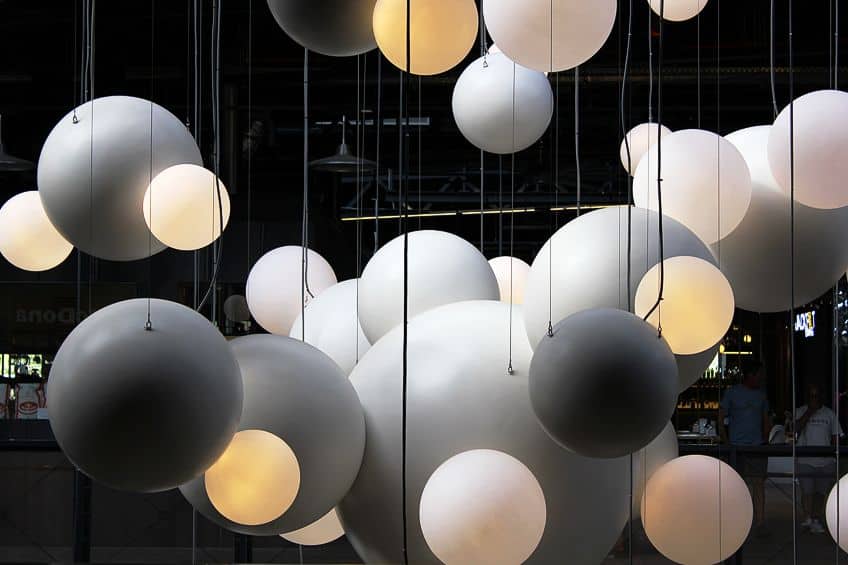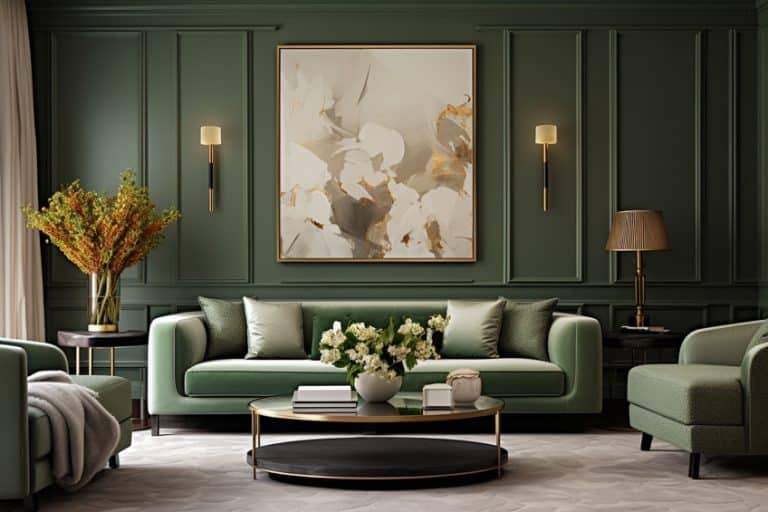Achromatic Colors – Colors That Contain No Hue or Saturation
Color can be an effective tool when used in any kind of design. Choosing the right colors can get your message across to viewers. We are mostly familiar with chromatic colors that provide different hues, which can be used to evoke various calming and stimulating feelings. However, you can use achromatic colors, which are without hue, as they are just as effective. To get better acquainted with achromatic colors, read further below to discover a little more about the topic.
Table of Contents
What Are Achromatic Colors?
To get a foundational understanding of colors, you should learn the basics of color theory. This will help you to create more effective designs. Basic color theory involves the understanding of colors that include primary, secondary, and tertiary colors, all with a color model or wheel. There are also various terms you need to understand when dealing with colors, which include some of the following.

- Hue: This refers to all colors we can see, for example, blue or red.
- Saturation: The purity or how intense a hue appears, independent of the color brightness.
- Value or lightness: The value of a color indicates how dark or light a hue is.
- Shades and tints: A shade is a pure color to which only black is added, while a tint is a pure to which only white has been added.
- Tone: Any pure hue to which gray has been added, making the color less vibrant and duller.
- Chroma: The intensity of a color determined by its brightness.
Let us take a look at achromatic vs. chromatic colors. Both chromatic and achromatic colors are a group of colors that can be used to create specific looks in a design. The major feature that distinguishes them from each other is saturation. A high saturation produces an intense and vivid color, while zero saturation has no color and determines whether it is chromatic or achromatic. Simply, an achromatic “color” does not contain a hue and is considered neutral, and includes black, white, and achromatic gray.
You only need the lightest amount of hue to classify it as a chromatic color. Chromatic colors are usually more vibrant and contain a particular wavelength of color that dominates, for example, green or red.
These can also be described as pure colors at full saturation. Achromatic colors contain no dominating hue and can contain all wavelengths, such as white. So, achromatic colors contain no hue or saturation, however, they do possess lightness, the same as chromatic colors. Below you will find achromatic vs. chromatic colors and the basic differences.

| Characteristics | Achromatic Colors | Chromatic Colors |
| Hue | No dominant hue | Contains a dominant hue |
| Saturation | Zero | Low to high |
| Colors | Gray, white, and black | All primary, secondary, and tertiary colors |
| Value or Lightness | Has dark and light variations | Has dark and light variations |
The Munsell Color System
We are all familiar with the traditional color wheel, however, there are many other color models out there. The traditional color system also does not represent neutral colors, such as white, black, and gray. However, there is a more comprehensive color model known as the Munsell color system, which was created by Albert Munsell, an artist and scientist in the 20th century. He thought that the descriptions of colors were inadequate and vague. So, he developed a three-dimensional “color wheel” that represents colors more accurately.
There are three attributes that all colors have, and include hue, lightness or value, and saturation or chroma. These attributes were taken and mapped out on the three-dimensional “color wheel”.
The value of a color can be seen in a vertical axis, which begins at black near the bottom, extends to grays, and ends in white at the top. The chroma extends around the vertical axis in an outward scale from gray or neutral at its center, to hues positioned on the outer edges.

In this system, there are five primary hues, which are green, yellow, red, blue, and purple. There are also five secondary or intermediate hues, including green-yellow, yellow-red, purple-blue, and blue-green. Each hue is subdivided into 10 steps, which include the value that begins at zero or pure black to pure white (10). The chroma also begins at zero or gray and extends away from the center. So, the color name or description includes the hue, value, and chroma, instead of simply, for example, “dark green”.
Types of Achromatic Colors
There are three main types of achromatic colors, which include black, white, and a mixture of these that form achromatic gray or a grayscale. Black, as with all achromatic colors, lacks hue and absorbs all light wavelengths. White combines and reflects all visible wavelengths, so even if it contains all colors, it is still perceived as lacking hue. Both these “colors” can be used to create shades and tints and are often referred to as neutrals.
However, this is dealing with lighting, if you are referring to pigments, some people would say that black and white can be termed as a “color” as it is tangible and a matter of our own perception.

The contrast between white and black is the greatest of any color combination, providing a bold and dramatic look in designs. The third type of achromatic color is the grayscale. Gray is a mixture of black and white and is all the shades of gray in between black and white that do not contain hue or saturation.
Near-Neutrals
Technically speaking, these are not achromatic colors but are created by combining a primary color with a neutral. The near-neutral appears to lack color, however, there is a hint of an underlying hue or undertone. For example, greige is a combination of gray and beige, beige being a shade of grayish yellow.
A few other colors are also seen as near neutrals, for example, tan, cream, ivory, and eggshell, among others.
Brown is also considered a neutral color; however, brown does have a definite hue that can include different shades of yellow, red, or orange, which means it is not an achromatic color. You cannot find brown on a traditional color wheel with pure colors, which is what classifies it as a neutral color. However, there are other color wheels that do allow white, gray, and brown with all other colors.

| Shade | Hex Code | CMYK Color Code (%) | RGB Color Code | Color |
| Black | #000000 | 0, 0, 0, 100 | 0, 0, 0 | |
| White | #ffffff | 0, 0, 0, 0 | 255, 255, 255 | |
| Mid-Gray | #808080 | 0, 0, 0, 50 | 128, 128, 128 | |
| Greige | #dcd6d0 | 0, 3, 5, 14 | 220, 214, 208 | |
| Brown | #a52a2a | 0, 75, 75, 35 | 165, 42, 42 |
Psychological and Symbolic Meanings of Achromatic Colors
Since color can be defined as a matter of perception, all colors, including achromatic colors, can have meaning and associations that can affect the mind and emotions. Of course, the associations are dependent on many factors like culture and personal preference. Chromatic colors provide a sense of warmth or coolness and have varying levels of saturation. So, warm colors like red are generally seen as stimulating and eye-catching, while cooler colors like blue provide a sense of calm.
Achromatic colors, even though they contain no hue or saturation, also have symbolic meanings.
Meaning of Black
In most cases, black is seen as a color of power, mystery, formality, and elegance. If you have ever been invited to a black-tie event, you know that sophistication and opulence are part of the occasion. The formality of black also provides a sense of protection and safety. They are not called “the men in black” for nothing.
In various countries, black is also seen differently.

For example, in China, it is a color of youthfulness and strength. In other countries, such as Japan, black is even seen as a feminine color, full of mystery. In many Western cultures, black also symbolizes death, fear, and evil. Overusing black can create a cold, menacing, and depressing feeling.
Meaning of White
White is commonly associated with cleanliness, purity, peace, innocence, and perfection. It is also a symbol of hope and clarity of mind and is also associated with open-mindedness. However, in certain countries, white is unlucky and can be associated with death and unhappiness. In Western cultures, when overused, it can become cold, sterile, and boring.
Meaning of Gray
Achromatic gray is often seen as practical, reliable, and in control. However, gray is also a very conservative or modest color that is also associated with being unemotional, sad, and pessimistic. On the positive side, gray can also be calming, stabilizing, and soothing.

Practical Applications Using Achromatic Colors
An achromatic color scheme has many applications and provides a look that is simple and balanced. The simple combination, which can also be seen as a monochromatic color combination, helps to create contrast and depth.
Achromatic Colors in Interior Design
A black-and-white color combination is quite popular for interior designs, especially in bathrooms and kitchens. An achromatic color scheme is simple, yet elegant, providing a clean and organized look. You can easily bring in pops of color that will provide a nice contrast and focal point when used with achromatic colors. For example, consider a grayscale and white living area as a neutral backdrop, but with a soft peach accent color provided in the furniture. You can also bring in accent colors through accessories, such as cushions, flowers, or paintings.
Remember, some gray paints can have undertones, so take note of this when choosing your neutral paint colors.

Achromatic Colors in Graphic Designs
When it comes to logos, websites, and other branding ideas, an achromatic color scheme can offer various benefits, depending on what you are going to use it for. Neutral colors can help to enhance the readability of messages on web pages and products. When using black-on-white text, it creates the best contrast, which makes it easy to read and make out what the message is.
Achromatic colors also convey luxury as well as simplicity, so it is often used for high-end products.
Achromatic Colors in Photography
Achromatic or black-and-white photos are quite popular, as they emphasize the main object or idea of a photo. When not using color, a photographer focuses more on contrast, form, and light, which enhances the composition. Black and white photos also evoke certain emotions and can add drama to a photo. Sometimes, you can convey mood and atmosphere, and more through a black and white photo than when using color.
The aim is to find images with high contrast, where the black and white contrast will come through in a photo. Using different textures or patterns can also provide an interesting contrast.

Achromatic Colors in Fashion
Black, white, and gray are all timeless colors that provide a certain elegance. Consider the black tuxedo or the black dress, which is something that never changes and remains a popular choice for formal and professional outfits. Of course, the choice of achromatic colors or otherwise, is a matter of personal preference. Achromatic colors can also be quite versatile. You can keep it simple and elegant or add pops of color and patterns to draw more attention.
Mixing and matching achromatic colors is easy, as they work well with all other colors and styles of outfits.

You might consider achromatic colors to be boring and limited, however, these colors are actually quite versatile. You can easily use them to create a dramatic effect, combining them to evoke certain emotions. They can also quite easily be used with all other chromatic colors to create an even more effective design. However you decide to use achromatic colors, they will certainly produce something unique.
Frequently Asked Questions
What Are Achromatic Colors?
Achromatic colors are technically not colors, as they do not contain any hue or saturation. The achromatic colors are black, white, and gray, which are also called neutral colors.
What Are Chromatic Colors?
These are opposite to achromatic colors and contain hue, saturation, and value. These include all of your pure hues like red, blue, and green, where one particular wavelength dominates. Chromatic colors do not contain any black, white, or gray.
Are Monochrome Colors and Achromatic Colors the Same?
These are two different terms that can be described as follows. Chromatic colors are only neutral colors like white, back, and gray. Monochromatic colors include achromatic and all other colors, however, it uses only a single color with lighter and darker variations.
In 2005, Charlene completed her Wellness Diplomas in Therapeutic Aromatherapy and Reflexology from the International School of Reflexology and Meridian Therapy. She worked for a company offering corporate wellness programs for a couple of years, before opening up her own therapy practice. It was in 2015 that a friend, who was a digital marketer, asked her to join her company as a content creator, and this is where she found her excitement for writing.
Since joining the content writing world, she has gained a lot of experience over the years writing on a diverse selection of topics, from beauty, health, wellness, travel, and more. Due to various circumstances, she had to close her therapy practice and is now a full-time freelance writer. Being a creative person, she could not pass up the opportunity to contribute to the Art in Context team, where is was in her element, writing about a variety of art and craft topics. Contributing articles for over three years now, her knowledge in this area has grown, and she has gotten to explore her creativity and improve her research and writing skills.
Charlene Lewis has been working for artincontext.org since the relaunch in 2020. She is an experienced writer and mainly focuses on the topics of color theory, painting and drawing.
Learn more about Charlene Lewis and the Art in Context Team.
Cite this Article
Charlene, Lewis, “Achromatic Colors – Colors That Contain No Hue or Saturation.” Art in Context. September 22, 2023. URL: https://artincontext.org/achromatic-colors/
Lewis, C. (2023, 22 September). Achromatic Colors – Colors That Contain No Hue or Saturation. Art in Context. https://artincontext.org/achromatic-colors/
Lewis, Charlene. “Achromatic Colors – Colors That Contain No Hue or Saturation.” Art in Context, September 22, 2023. https://artincontext.org/achromatic-colors/.









